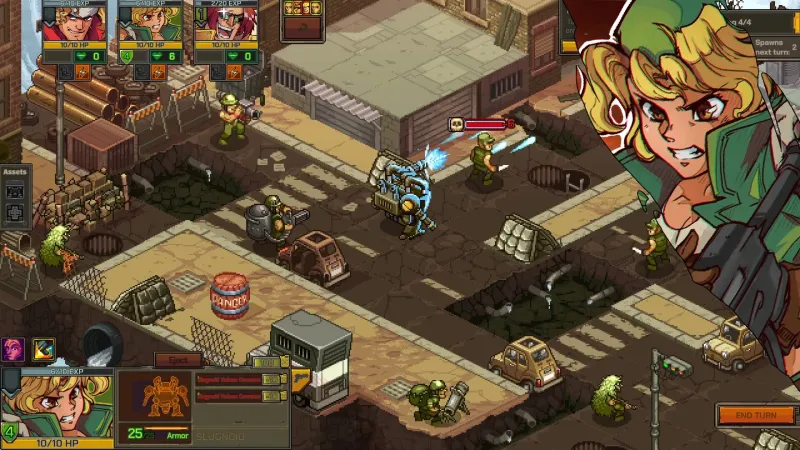Artificial Intelligence (AI) has seen tremendous growth, transforming industries from healthcare to finance. However, as organizations and researchers develop more advanced models, they face significant challenges due to their sheer size and computational demands. AI models are expected to exceed 100 trillion parameters, pushing the limits…
Epiphan Pearl Nexus & Pearl Mini Which Pearl is Right for You? – Videoguys
On Today’s Videoguys Live, James is comparing the Epiphan Pearl Mini to the brand new Pearl Nexus. He discusses each products feature set and giving you the information you need to decide which system is right for your use case. Tune in to learn more and check out the Epiphan Pearl Nexus. Available at Videoguys.com and In stock Now!!!!
[embedded content]
|
|
|
|
|
Encoded Channels |
3 × Full HD |
3 × Full HD |
|
Video Inputs |
2 × HDMI | 1 × 3G SDI | 2 × USB |
2 × HDMI | 1 × 3G SDI | 2 × USB |
|
Audio Inputs |
2 × XLR/TRS |
2 × XLR/TRS |
|
Network Inputs |
SRT | RTSP | NDI|HX |
SRT | RTSP | NDI|HX |
|
Video Output |
1 × HDMI |
1 × HDMI |
|
Resolution |
Up to 1080p (Full HD) |
Up to 1080p (Full HD) |
|
Storage |
SD card (user supplied) |
1 TB SSD |
|
Form Factor |
Portable desktop model with 7″ touchscreen |
1RU with detachable mounts |
|
Dimensions |
3.8lbs 10.25” × 6.75” × 2.37” |
5.3lbs 19” × 7.5” × 1.75” |
Epiphan Pearl Nexus
Designed with flexibility in mind, Nexus fits at the center of video workflows, seamlessly integrated with all the hardware and software used in professional AV environments. Nexus brings Pearl’s feature set to those who design and integrate solutions for classrooms, courtrooms, presentation spaces etc. and require a 1 RU form factor.
|


Epiphan Pearl Mini
Record, stream, and switch up to three full HD video inputs from HDMI, SDI, and USB sources with Pearl Mini™ – or take advantage of NDI|HX support. Use the giant touch screen or web-based interface, or access and operate the system from anywhere in the world with Epiphan Edge. Same Tech + 7 Inch Touch Screen!
|

Case Study – How MTSU unifies the learning experience with Pearl Mini
- The MTSU AV team had a short time span for installing Pearl Mini, cameras, and mics. Working with Epiphan, they were able to make 428 rooms fully functional in just three months.
- Pearl Mini makes recording and accessing lecture content a no-brainer for faculty and students. The one-touch system is intuitive and requires little training, allowing even the most inexperienced users to control the system with confidence.
Videoguys is Your Source for All Epiphan Pearl Systems
Call Us at 800-323-2325 or Visit Videoguys.com for More Info
Dead By Daylight Developer Behaviour Interactive Is Laying Off Up To 95 Employees

Dead by Daylight developer Behaviour Interactive is laying off roughly 95 employees, the company has announced. The majority of those that will be affected – 70 of the 95 – work at the studio’s Montreal, Canada, office, as reported by GamesIndustry.biz.
As for why, the company cites restructuring as it pursues a clarified vision around “multiple strategic changes.” Behaviour says these layoffs will not affect its service business or its development on Dead by Daylight.
“To pursue this clarified vision [lead in horror, lead in service, and explore the possibilities of location-based entertainment], Behaviour will implement multiple strategic changes to its corporate structure, improving the distinction between its product, production, business development, and marketing resources,” a press release reads. “As a result of these changes, the company will reduce its team by up to 95 employees, 70 of whom are based in Montreal. Each of these individuals offered valuable contributions to Behaviour, and will be fully supported by the organization in pursuing the next step in their careers.”
Outside of Dead by Daylight development, Behaviour is helping The Quarry developer Supermassive Games develop The Casting of Frank Stone, a single-player horror game set in the Dead by Daylight universe.
These layoffs arrive a few months after the studio laid off roughly 45 people at the same Montreal office back in January and join an ever-growing list of disheartening layoffs and studio closures in 2024.
Fae Farm and Dauntless developer Phoenix Labs laid off the majority of its staff and canceled its in-development games back in May, and that same week, Square Enix announced it will begin layoffs as part of “structural reforms.”
In May, Xbox closed four Bethesda studios, including Hi-Fi Rush developer Tango Gameworks and Redfall studio Arkane Austin. Take-Two Interactive closed Rollerdrome studio Roll7 and Kerbal Space Program 2 studio Intercept Games alongside major layoffs to its indie-publisher Private Division label. That same week, we learned Deliver Us Mars developer Keoken Interactive had laid off nearly its entire staff.
Elsewhere in the year, EA laid off roughly 670 employees across all departments, resulting in the cancellation of Respawn’s Star Wars FPS game. PlayStation laid off 900 employees across Insomniac, Naughty Dog, Guerrilla, and more, closing down London Studio in the process, too. The day before, Until Dawn developer Supermassive Games announced it laid off 90 employees.
At the end of January, we learned Embracer Group had canceled a new Deus Ex game in development at Eidos-Montréal and laid off 97 employees in the process. Also in January, Destroy All Humans remake developer Black Forest Games reportedly laid off 50 employees and Microsoft announced it was laying off 1,900 employees across its Xbox, Activision Blizzard, and ZeniMax teams, as well. Outriders studio People Can Fly laid off more than 30 employees in January, and League of Legends company Riot Games laid off 530 employees.
Lords of the Fallen Publisher CI Games laid off 10 percent of its staff, Unity will lay off 1,800 people by the end of March, and Twitch laid off 500 employees.
We also learned that Discord had laid off 170 employees, that layoffs happened at PTW, a support studio that’s worked with companies like Blizzard and Capcom, and that SteamWorld Build company, Thunderful Group, let go of roughly 100 people. Dead by Daylight developer Behaviour Interactive also reportedly laid off 45 people, too.
The hearts of the Game Informer staff are with everyone who’s been affected by layoffs or closures.
[Source: GamesIndustry.biz]
New technique reveals how gene transcription is coordinated in cells

The human genome contains about 23,000 genes, but only a fraction of those genes are turned on inside a cell at any given time. The complex network of regulatory elements that controls gene expression includes regions of the genome called enhancers, which are often located far from the genes that they regulate.
This distance can make it difficult to map the complex interactions between genes and enhancers. To overcome that, MIT researchers have invented a new technique that allows them to observe the timing of gene and enhancer activation in a cell. When a gene is turned on around the same time as a particular enhancer, it strongly suggests the enhancer is controlling that gene.
Learning more about which enhancers control which genes, in different types of cells, could help researchers identify potential drug targets for genetic disorders. Genomic studies have identified mutations in many non-protein-coding regions that are linked to a variety of diseases. Could these be unknown enhancers?
“When people start using genetic technology to identify regions of chromosomes that have disease information, most of those sites don’t correspond to genes. We suspect they correspond to these enhancers, which can be quite distant from a promoter, so it’s very important to be able to identify these enhancers,” says Phillip Sharp, an MIT Institute Professor Emeritus and member of MIT’s Koch Institute for Integrative Cancer Research.
Sharp is the senior author of the new study, which appears today in Nature. MIT Research Assistant D.B. Jay Mahat is the lead author of the paper.
Hunting for eRNA
Less than 2 percent of the human genome consists of protein-coding genes. The rest of the genome includes many elements that control when and how those genes are expressed. Enhancers, which are thought to turn genes on by coming into physical contact with gene promoter regions through transiently forming a complex, were discovered about 45 years ago.
More recently, in 2010, researchers discovered that these enhancers are transcribed into RNA molecules, known as enhancer RNA or eRNA. Scientists suspect that this transcription occurs when the enhancers are actively interacting with their target genes. This raised the possibility that measuring eRNA transcription levels could help researchers determine when an enhancer is active, as well as which genes it’s targeting.
“That information is extraordinarily important in understanding how development occurs, and in understanding how cancers change their regulatory programs and activate processes that lead to de-differentiation and metastatic growth,” Mahat says.
However, this kind of mapping has proven difficult to perform because eRNA is produced in very small quantities and does not last long in the cell. Additionally, eRNA lacks a modification known as a poly-A tail, which is the “hook” that most techniques use to pull RNA out of a cell.
One way to capture eRNA is to add a nucleotide to cells that halts transcription when incorporated into RNA. These nucleotides also contain a tag called biotin that can be used to fish the RNA out of a cell. However, this current technique only works on large pools of cells and doesn’t give information about individual cells.
While brainstorming ideas for new ways to capture eRNA, Mahat and Sharp considered using click chemistry, a technique that can be used to join two molecules together if they are each tagged with “click handles” that can react together.
The researchers designed nucleotides labeled with one click handle, and once these nucleotides are incorporated into growing eRNA strands, the strands can be fished out with a tag containing the complementary handle. This allowed the researchers to capture eRNA and then purify, amplify, and sequence it. Some RNA is lost at each step, but Mahat estimates that they can successfully pull out about 10 percent of the eRNA from a given cell.
Using this technique, the researchers obtained a snapshot of the enhancers and genes that are being actively transcribed at a given time in a cell.
“You want to be able to determine, in every cell, the activation of transcription from regulatory elements and from their corresponding gene. And this has to be done in a single cell because that’s where you can detect synchrony or asynchrony between regulatory elements and genes,” Mahat says.
Timing of gene expression
Demonstrating their technique in mouse embryonic stem cells, the researchers found that they could calculate approximately when a particular region starts to be transcribed, based on the length of the RNA strand and the speed of the polymerase (the enzyme responsible for transcription) — that is, how far the polymerase transcribes per second. This allowed them to determine which genes and enhancers were being transcribed around the same time.
The researchers used this approach to determine the timing of the expression of cell cycle genes in more detail than has previously been possible. They were also able to confirm several sets of known gene-enhancer pairs and generated a list of about 50,000 possible enhancer-gene pairs that they can now try to verify.
Learning which enhancers control which genes would prove valuable in developing new treatments for diseases with a genetic basis. Last year, the U.S. Food and Drug Administration approved the first gene therapy treatment for sickle cell anemia, which works by interfering with an enhancer that results in activation of a fetal globin gene, reducing the production of sickled blood cells.
The MIT team is now applying this approach to other types of cells, with a focus on autoimmune diseases. Working with researchers at Boston Children’s Hospital, they are exploring immune cell mutations that have been linked to lupus, many of which are found in non-coding regions of the genome.
“It’s not clear which genes are affected by these mutations, so we are beginning to tease apart the genes these putative enhancers might be regulating, and in what cell types these enhancers are active,” Mahat says. “This is a tool for creating gene-to-enhancer maps, which are fundamental in understanding the biology, and also a foundation for understanding disease.”
The findings of this study also offer evidence for a theory that Sharp has recently developed, along with MIT professors Richard Young and Arup Chakraborty, that gene transcription is controlled by membraneless droplets known as condensates. These condensates are made of large clusters of enzymes and RNA, which Sharp suggests may include eRNA produced at enhancer sites.
“We picture that the communication between an enhancer and a promoter is a condensate-type, transient structure, and RNA is part of that. This is an important piece of work in building the understanding of how RNAs from enhancers could be active,” he says.
The research was funded by the National Cancer Institute, the National Institutes of Health, and the Emerald Foundation Postdoctoral Transition Award.
Open World Dress-Up Game Infinity Nikki Gets A Delightful Gameplay Trailer And Beta Test This Year

If you haven’t followed Infinity Nikki, it’s equal parts charming, beautiful, and ambitious. The open-world game is the latest entry in the Nikki series of fashion games, which is very popular in Asia, and Westerners are getting their biggest exposure to it yet with this charming adventure.
[embedded content]
The game unfolds on the magical continent of Miraland, and Nikki must save it. Her main power is “styling,” which involves changing clothes from different nations, allowing her to adopt unique abilities. For example, one outfit allows her to float while another cleanses corrupted creatures of demonic energy. The trailer shows one outfit that lets players summon a giant flower to glide through the air. Another ability shrinks her to the size of her small companion, Momo, to access tight areas and other locations.
The more outfits you collect, the more abilities Nikki has to solve puzzles and overcome platforming obstacles. But despite the “save the world” premise, Infinity Nikki is billed as a relaxing adventure. You can also catch bugs, go fishing, and gather resources to craft new outfits, among other activities.
Infinity Nikki looks wild, and fans can get their first taste of it in a beta test happening during Q3 of this year. The game is coming to PlayStation 5, PC, iOS, and Android but has no release window.
Venom And Adam Warlock Are Coming To Marvel Rivals, Closed Beta In July

During Sony’s PlayStation State of Play, new gameplay and details were shared for Marvel Rivals. For the uninitiated. Marvel Rivals is a superhero (specifically Marvel superhero) team-based PVP shooter inspired by games like Overwatch. The footage, seen below, reveals Venom and Adam Warlock are coming to the game. The footage also shows a new location – the Tokyo 2099: Spider-Islands map.
Alongside the new gameplay details, the game is now also confirmed to be coming to PlayStation 5 and Xbox Series X/S alongside the previously confirmed PC platform. Developer NetEase is also planning a closed beta for the game in July. PlayStation beta testers will have exclusive access to Spider-Man’s Scarlet Spider cosmetic skin.
[embedded content]
For more on Marvel Rivals, you can see the announcement trailer and the so-far-confirmed roster for the game here.
Crash Bandicoot 4 Developer Toys For Bob Announces Publishing Deal With Xbox For Its Next Game

Toys for Bob, the developer of Crash Bandicoot 4 and the Skylanders series, has announced a publishing deal with Xbox for its next game. The studio recently went independent after splitting off from its former parent company, Activision Blizzard.
The studio states its new title is “very early in development” and that we won’t see it for some time. Whatever this game is, Xbox will be its home, which isn’t surprising since the studio teased it was exploring a relationship with the publisher a couple of months ago.
We’re excited to announce that we’ll be partnering with @Xbox to publish our next new game. We’re still very early in development, so you might not hear from us for a bit – but know that we’re working hard on an experience we’re so sooo inspired about! Can’t wait to share more 💜 pic.twitter.com/6EqrQbabpv
— Toys For Bob (@ToysForBob) May 31, 2024
Toys For Bob went independent in February, a few months after Microsoft acquired Activision Blizzard. The studio is seemingly getting to have its cake and eat it too, since it still gets to work with Xbox while being an autonomous entity. Prior to leaving Activision, Toys For Bob worked on the recent Crash Bandicoot games such as Crash Bandicoot 4: It’s About Time and Crash Team Rumble. It also developed the Spyro Reignited Trilogy and created the once-wildly popular Skylanders series.
You can read our review of Toys for Bob’s most recent release, Crash Team Rumble, here.
Geoff Keighley Says ‘People Are Setting Themselves Up For Failure’ When Asked About Kingdom Hearts IV At SGF

This year’s Summer Game Fest showcase is happening this week, on Friday, June 7, at 2 p.m. PT/5 p.m. ET, and with more than 55 studios and publishers set to be featured at the event (including Play Days this weekend) this year, fans have been speculating on what they might see. That includes Kingdom Hearts fans, who have been hoping to see something related to Kingdom Hearts IV at SGF this year, given it’s been more than two years since its reveal.
However, SGF host and creator Geoff Keighley thinks Kingdom Hearts fans should lower their expectations for the show.
“People keep asking about Kingdom Hearts, I don’t know why,” Keighley says during a recent stream where he answered questions about SGF. “I think it’s because we did [Final Fantasy VII Rebirth] last year or something like that. But yeah, people are setting themselves up for failure but you guys can keep hoping.”
Here’s a clip of it, too:
Now, Keighley could be playing coy, especially with the “but you guys can keep hoping” part at the end, but it’s more likely that he’s trying to nicely let Kingdom Hearts fans know that if they expect to see Kingdom Hearts IV during SGF, they might be disappointed.
In the meantime, watch the Kingdom Hearts IV reveal trailer, and then read Game Informer’s exclusive interview with Tetsuya Nomura about Kingdom Hearts IV, the series’ future with Final Fantasy, and more.
Do you think we’ll hear about Kingdom Hearts IV this upcoming weekend? Let us know in the comments below!
Metal Slug Tactics Reemerges With A New Trailer And Fall Release Window

It’s been a while since we last got an update on Metal Slug Tactics, the turn-based strategy spin-off of the popular side-scrolling shoot ’em up. The game was first announced during the online-only E3 2021 and has suffered a few delays since then with minimal updates. After a long wait, the game has finally reemerged with a new trailer and a fall 2024 launch window.
The new video shows off the game’s spin on tactics, with long-time stars Marco, Eri, Fio, and Tarma taking literal turns obliterating the opposition. The game sees players building squads of classic Metal Slug characters, each with unique loadouts of recognizable series weapons, to take on signature villains and bosses, like the warship in the video.
[embedded content]
Metal Slug Tactics is developed by Leikir Studio and is published by Dotemu, the team behind TMNT: Shredder’s Revenge. Famed composer Tee Lopes (Shredder’s Revenge, Sonic Mania) is developing the game’s soundtrack.
When first revealed, Metal Slug Tactics was only slated to launch for Switch and PC. Today’s trailer confirms that it’s also coming to PlayStation 5, Xbox Series X/S, PlayStation 4, and Xbox One.

